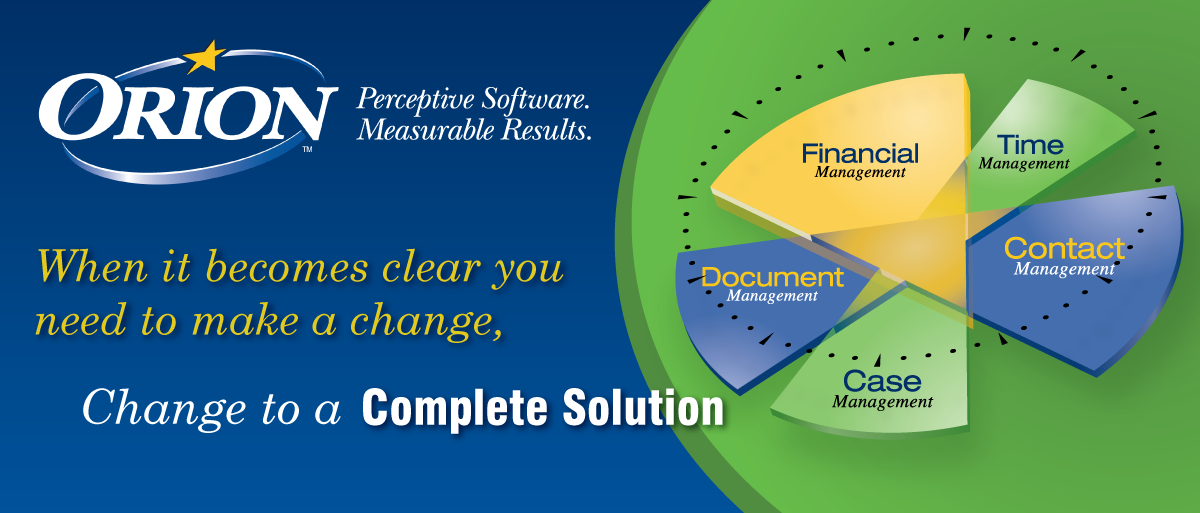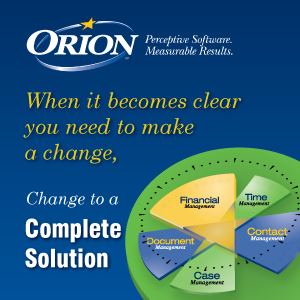“The immediate aftermath of the recession was in-house counsel suddenly started to demand discounts — and they got them because law firms didn't know what else to do,” says Tim Corcoran, Principal at Corcoran Consulting. “Without a huge change in the value that was delivered, they simply wanted to spend less for what they were buying.”
Today, the pressure to provide services at a lower cost remains a reality for a number of law firms. Up to a fifth of the fees at firms with more than 250 lawyers come from discounted hourly rates, according to Altman Weil’s 2020 Law Firms in Transition survey. At firms with fewer than 250 attorneys, 31% to 40% of the fees, on average, involve discounted rates.
In some instances, firms may be able to offset fee reductions by trimming internal expenses. But that’s not always a viable option. More than half of the attorneys who participated in a 2019 survey said managing rate discounts is one of the biggest challenges associated with pricing.
When firms find they can’t meet a fee request and provide quality legal services, informing the client can be a challenging prospect. The following approaches can help law firms effectively convey cost parameters, ensure operations remain profitable — and carefully preserve the client relationship.
MAKE COST A JOINT CONVERSATION
Pricing disconnects can arise if clients underestimate the amount of time matters will require.
Trying to align expectations may help them become more comfortable with the proposed cost, Corcoran says. For instance, if a client feels work will take much less time than the firm anticipates, the firm may want to point out the time estimate is based on its prior experience. They can offer to work with the client to determine a fee for the first stage of the engagement. That may lead to subsequent stages being priced more realistically once everyone has seen what the work involves.
“[A firm could say], if it goes further, let’s negotiate those terms at that time, not discuss it now,” he says. “It becomes a business discussion for many clients, not just a price, take it or leave it.”
“We’ve had situations where there’s been a request to abate or hold off on some of the fees, or a success fee if something good happens in the case. Sometimes the risky ones turn out to be beneficial, so we’re OK taking on a little risk here and there.”
Corcoran says a collaborative approach to matter pricing can also provide an additional bonus — a chance to emphasize the firm’s expertise.
“Saying, ‘To give you a proposal for what it would cost, we’ve got to dig into the issue’ — that exercise is a great way to demonstrate [the firm knows] what [it’s] talking about,” he says. “We know what questions to ask, can compare it to other matters we’ve done — we’ll come up with budget to help you manage your CFO.”
ASK FOR ALTERNATIVE COMPENSATION
Salisian Lee LLP of Los Angeles has found a flat-fee structure doesn’t often work well for its litigation work due to the time it can involve. So the seven-attorney firm instead opts for a fair amount of hybrid structures, says Co-Managing Partner Neal Salisian — potentially combining a reduced hourly rate and contingency.
“That way, we know should we prevail, there’s going to be a small contingency benefit at the end of the arrangement, so everyone’s kind of sharing in the risk,” Salisian says. “Clients are very receptive to the concept because they can get your hourly rate for [less]; the other benefit is they don’t have to give up so much upside. If you’re talking about a multimillion-dollar damage claim, sometimes they don’t want to give up 40% of that.”
Clients have also approached the firm with completely different fee structure ideas, Salisian says. Leadership will run the numbers to decide whether the arrangement would work, factoring in elements such as what the spend for particular associates to work on the case would be and any potential recoveries.
“If someone complains about the fee, they usually don’t understand what’s behind the fee.”
“If a client has a creative way it wants to structure a deal, we’ll consider it,” he says. “We’ve had situations where there’s been a request to abate or hold off on some of the fees, or a success fee if something good happens in the case. Sometimes the risky ones turn out to be beneficial, so we’re OK taking on a little risk here and there.”
The firm has had a fairly open approach to pricing since being founded a decade ago, according to Salisian. “For the most part, we’ve increased our flexibility in terms of what we take as a contingency fee,” he says. “It’s not a pure dollar amount; maybe there’s a piece of property someone is trying to get or prevent someone from getting, and you can structure a contingency based on the relative value of whatever was not lost or is acquired.”
ADJUST PAYMENT PROCESS TERMS
If reducing fees isn’t an option, clients may find some billing flexibility helpful.
In addition to accepting payments through systems like PayPal and Zelle, Florida immigration law firm Rambana & Ricci, P.L.L.C., offers various renumeration methods and incentives, according to Partner Elizabeth Ricci.
“I take payments over time, give discounts for payments in full and credit the consultation fee to keep clients and stay profitable,” Ricci says. “People appreciate that. I try to be as reasonable as possible, but I still have to pay my staff and have my own expenses.”
Because the airline industry has had a challenging year due to reduced flight demand, Dinsmore, a national law firm with more than 650 attorneys, has emphasized its desire to help ease payment pressures companies in the sector might be feeling, according to Josh Lorentz, a Partner and Chair of the firm’s Intellectual Property Department and Finance Committee.
“We think in terms of decades,” Lorentz says. “Some clients in that industry asked if we could change the payment terms from 30 days to 60 or more. Some have asked for a temporary discount on invoices for three months. Those are things we’re willing to do, knowing it’s all going end and that industry is going to get back to normal.”
CONTINUOUSLY COMMUNICATE WORTH
Earlier this year, Rambana & Ricci increased its fee for matters relating to Deferred Action for Childhood Arrivals (DACA) renewal by approximately $250. This was due to the additional security features the firm needed to invest in after U.S. Citizenship and Immigration Services began accepting signed documents digitally and the time required to address related filing changed.
Because DACA had been in the news and her clients were aware of the recent developments, Ricci was confident they’d understand why the firm had to charge more. However, people complained that because there was an economic downturn, she should have lowered prices, Ricci says.
“One client [asked] why were we charging so much,” she says. “I said, ‘I have to be on top of all the technology and legal changes that are literally happening day by day, and my time is valuable.’ If someone complains about the fee, they usually don’t understand what’s behind the fee.”
Highlighting the steps legal work involves — and any specific benefits clients receive — may help quell cost concerns.
Lorentz says some firms are underscoring services that clients were once billed for but they may now receive for no charge, such as legal research, which various organizations felt should be included in the firm’s overall legal fee after the Great Recession.
“With every new client, you have an opportunity for a retention agreement,” he says. “A lot of times, [firms may] put it up front — this includes these value-added services — so it’s known from the beginning.”
With the rise of the pricing professional role in the industry in recent years — whose job, Corcoran notes, is to provide financial insight on matters — and an increased emphasis on project management and process improvement, some firms now have data identifying the specific elements that are or could eventually be affecting matter time and cost.
“I take payments over time, give discounts for payments in full and credit the consultation fee to keep clients and stay profitable. People appreciate that. I try to be as reasonable as possible, but I still have to pay my staff and have my own expenses.”
That information can enable them to proactively explain and, if need be, defend their pricing structure on an ongoing basis.
“There are different tactical things firms can do to convey value,” Corcoran says. For example, he says there are a number of firms that emphasize, “‘We’re not just great lawyers but also great businessmen, and the benefit of working with us is we help you manage matters effectively, not just give you a legal outcome.’”
He notes some firms have realized using tools to provide feedback to clients in real time can be helpful. E-billing programs, for instance, can show they have the right people performing the right tasks — partners supervising and associates doing the work — and invoice content can also serve as a value touchpoint.
“There’s more understanding that invoice has the opportunity to convey value or irreparably harm the communication of value,” Corcoran says. “Some firms have spent a lot of time saying, ‘Here are the words we use in our time entries.’ It’s not just ‘Had lunch with colleagues, matter X.’ It’s ‘Met with colleague to talk about matter X and ensure we can overcome the most recent memo from the adversary and develop the recommendation for the client.’”
AN ENDURING INTEREST
While the Great Recession occurred more than a decade ago, it’s clear legal service costs remain a focus for numerous organizations.
Nearly three-quarters of in-house counsel have at least some concern their company is overspending on outside counsel, with more than a quarter reportedly very or extremely concerned, according to a 2020 LegalBillReview.com survey. More than half (55%) of the respondents indicated reducing outside counsel spend was one of their top initiatives.
“[During] the Recession, the people [lawyers] work for said, ‘Lower cost, improve value and throughput, improve quality and do it for less, or we’ll find someone who will,’” Corcoran says. “Those businesspeople will never take their foot off the accelerator.”
With uncertainty surrounding the COVID-19 pandemic’s ultimate effect on the economy, that sentiment isn’t likely to change. Firms don’t, however, need to automatically respond to all matter fee requests by slashing what they charge.
After more than a decade of negotiating revised pricing, law firms may be better positioned to understand and address clients’ cost needs. That might be through a fee reduction combined with another incentive, using the first portion of a matter to gauge the time involved or another mutually beneficial means.
“During the Recession, we saw companies looking to price certain areas of work with different firms to see where they could get the best cost — more so than we’re seeing now,” Lorentz says. “A number of industries believe this pandemic is temporary; they’re willing to stick with service providers who partner with them. It takes a lot of leaning in to foster those relationships. Being willing to run with clients who are running and walk when they’re walking goes a long way.”





